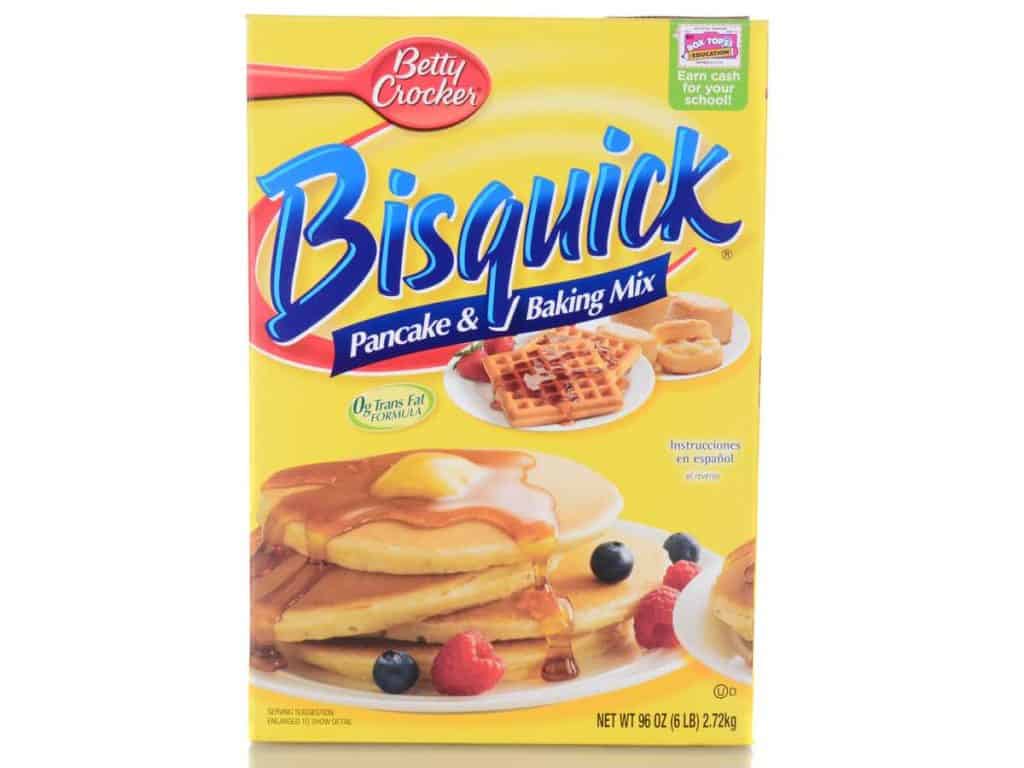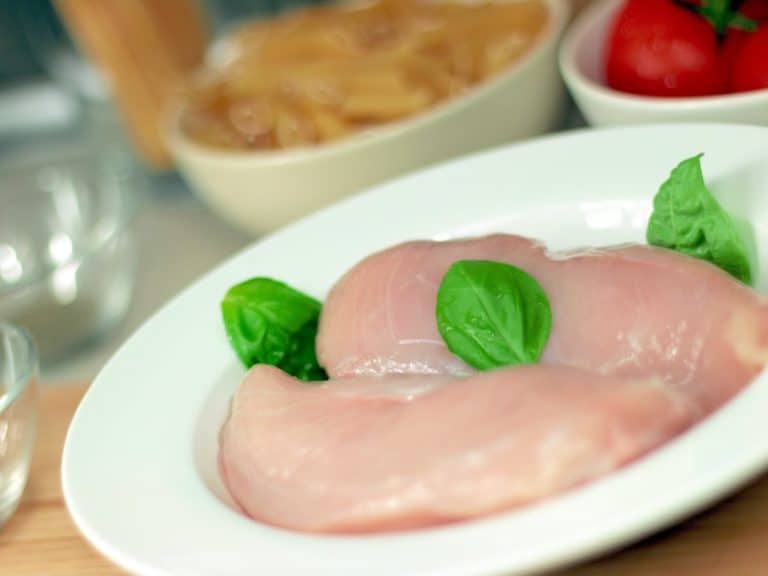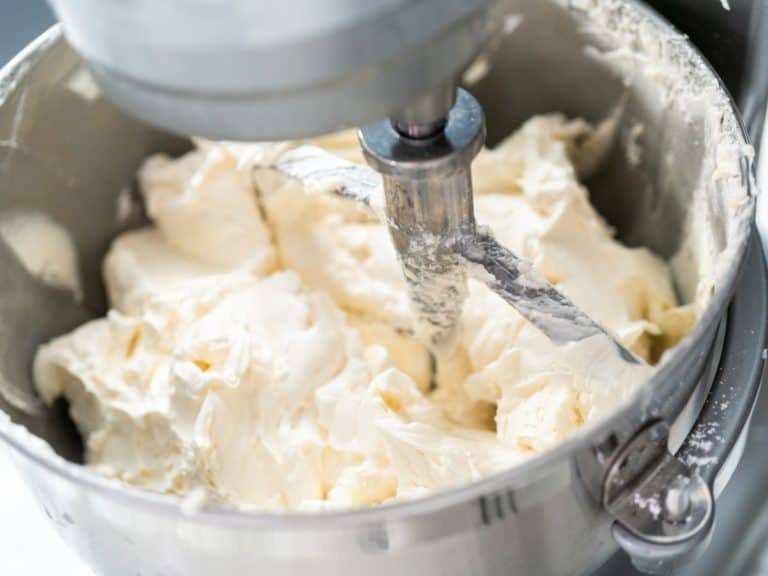When You Can Use Bisquick Instead Of Flour
Don’t want to use flour for your recipe?
Or maybe, you don’t have enough flour by your side to make the recipe, and you only have the Bisquick left. Then, in such a situation, you might get tempted to use Bisquick, a premixed baking mix. In addition, you might be thinking about questions related to it.
So, can you use Bisquick instead of flour or vice versa?
As a general rule, you can use Bisquick instead of flour as long as Bisquick can go well as an ingredient of that particular recipe. However, it is important to note that Bisquick and flour can’t be interchanged directly because a Bisquick is made of many extra ingredients other than flour.
Let’s take a closer look at the difference between flour and Bisquick so that you can understand why we can’t use them interchangeably. Along with that, let’s know how we can use Bisquick instead of flour. So without further ado, let’s jump in!

Difference Between Flour And Bisquick
There’s no need to explain much about flour, as you might already know. Flour is a powder that is obtained after grinding grains, especially wheat, and then used to make bread, cakes, etc.
On the other hand, a Bisquick is a pre-mixed commercial baking mix. General Mills sells it under the Betty Crocker brand.
Here’s a list of ingredients of the Bisquick Original:
- Bleached Wheat Flour
- Dextrose
- Corn Starch
- Palm Oil
- Leavening
- Canola Oil
- Sugar
- salt
- DATEM
- Distilled Monoglycerides
So the main difference between flour and Bisquick is the ingredients.
Flour is only a basic ingredient that we use in baking that doesn’t have any addition of other ingredients. In comparison, Bisquick can contain many ingredients like flour, salt, sugar, baking powder, and shortening.
Bisquick was originally invented in 1930. It was designed as a pre-mixed batter to make the biscuits fast. It is made by the General Mills brand, Betty Crocker.
Previously, Bisquick used to have lard because of which it needed refrigeration. But afterward, it was replaced with hydrogenated oil because of which it could be stored safely on the shelves at room temperature.
This product was originally made to make biscuits, but soon it became a suitable option for making cookies, dumplings, pancakes, etc. This product’s quick popularity probably increased the recipe potential for baking mixtures.
Is Bisquick All-Purpose Flour?
Although Bisquick is a pre-made baking mix containing different ingredients, technically, it is not all-purpose flour. Since it has some extra ingredients compared to regular flour. Hence, it may not behave in the same way in a recipe as an all-purpose flour would do.
With that being said, there are still ways to use the Bisquick instead of using the flour. This could be handy, especially when you don’t have flour and only have the Bisquick.
So let’s see!

How To Use Bisquick Instead Of Flour
It can be a convenient option to make baked items out of Bisquick, especially because of the presence of different ingredients like the salt and leavening agent. However, you need to also take them into account while you are thinking of using a Bisquick in place of flour in a given recipe.
- You need to first make sure of how much flour, shortening, baking powder, and salt will be required for making the recipe.
- After that, you need to substitute Bisquick with flour-based on an equal ratio. For instance, if you are supposed to add 2 cups of flour in your recipe, you can add the same amount – 2 cups of Bisquick to it.
- You need to also make sure about how much baking powder the recipe requires. You may need to add additional baking powder if the amount present in Bisquick won’t be sufficient.
- If you have already added any shortening in your recipe, try to avoid it since your Bisquick will already have it. So instead, rather than that, you can substitute water in place.
- Moreover, if your recipe asks for salt, avoid including it because your Bisquick will already have the appropriate amount of salt with respect to the adequate ratio of leavening agent and flour.
Bisquick contains about 1.5 tsp. of baking powder along with 3 tbsp. of shortening.
Now, for using the Bisquick instead of the flour, you need to first examine your recipe.
If luckily, your recipe asks for 1.5 tsp. of baking powder along with 3 tbsp. of butter or oil with respect to each cup of flour, then you don’t need to worry much!
Why?
Because the 1 cup of Bisquick will already have that much amount of those ingredients. So you don’t have to add anything extra in such a case.
While determining how much baking powder will be needed, here’s a tip for you. First, you have to multiply the number of flour cups in the recipe by 1.5. After that, you have to subtract the amount of baking powder asked in the recipe. The difference that you will get is the amount of baking powder you will have to add. Isn’t that cool?
Moreover, suppose after calculation, you find that the difference comes in negative.
In that case, it is actually an indication that Bisquick has more baking powder than is needed for the recipe. Note that if the amounts are close enough, you shouldn’t face many problems.
However, as per the recipe, if you need more than a teaspoon less baking powder than Bisquick already has, along with the fact that your recipe is for a baked cake or bread.
Then in such a scenario, it is important to remember that substituting the Bisquick for the flour can cause the bread or cake to rise more quickly and then collapse – as a result giving unsatisfactory results. So you have to keep that in mind.
Another cool tip while determining the amount of shortening you will require is to first multiply the cups of flour mentioned in your recipe with 3 tbsp.
Then you should subtract the amount of shortening mentioned in the recipe from the amount you have calculated. The difference that will get is the amount of shortening agent you will need.
Conclusion
In short, yes, you can use Bisquick instead of flour. However, it may not work well in all the recipes and maybe like a hit and miss. But in general, as long as you know the right way to substitute it in the recipe in place of the flour, you won’t have any problem.
That’s it!





